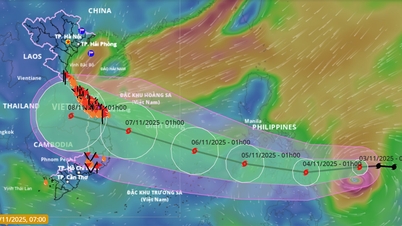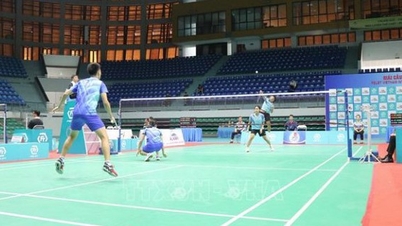
Medlatec Tay Ho General Clinic ( Hanoi ) has just admitted a 20-year-old male patient to the hospital with numbness in all four limbs, loss of sensation in both legs, and weak movement. Medical history shows that the patient used laughing gas with high frequency - more than 50 balls per session for 6 months. Magnetic resonance imaging (MRI) results showed cervical spinal cord damage, typical of neuropathy syndrome caused by N₂O gas.
Military Hospital 175 said that in just the past month, it has received 3 cases of severe central nervous system damage related to laughing gas. There were cases of loss of language, behavioral disorders, and muscle spasms. The patients were aged 18-28, highly educated, used the gas many times in recreational environments or ordered it online.
Laughing balloons are balloons filled with Nitrous Oxide (N₂O) gas – a colorless, odorless compound. When inhaled, this gas affects the nervous system, causing excitement, uncontrolled laughter, and even hallucinations. According to the Ministry of Health , N₂O gas is used in controlled medicine and industry according to international standards. However, when abused, this gas can cause serious damage to physical and mental health, especially in young people.
Dr. Hoang Anh Tuan - Neurology Specialist, Medlatec Tay Ho said: "Long-term exposure to N₂O gas causes the body to deactivate vitamin B12, causing spinal cord damage. A common early sign is numbness in the limbs. If not detected promptly, serious nerve damage can lead to very slow recovery, or no recovery."
In addition to nerve damage, laughing gas also causes many less recognized consequences: emotional disorders, anxiety, persistent hallucinations, memory loss, poor concentration. Some people describe feeling “sometimes awake and sometimes unconscious”, “living like it’s not real”, even paranoia and dangerous behavior. These are signs of N₂O dependence – a condition not unlike hallucinogen addiction.
Since January 1, 2025, Resolution No. 173/2024/QH15 of the National Assembly officially took effect, clearly stipulating: N₂O gas (ie laughing gas) is a prohibited item for use for recreational and entertainment purposes. Along with that, acts of producing, storing, transporting and trading laughing gas for recreational purposes are all strictly handled according to the law.
In fact, laughing gas balloons still appear in many entertainment establishments in big cities. N₂O gas cylinders are pre-filled into balloons and sold openly to customers in need – even with home delivery services through social networking platforms. On some central streets of Hanoi and Ho Chi Minh City, ordering laughing gas balloons is still easy.
It is also important to emphasize that social awareness of the consequences of laughing gas is still vague. Many young people think that this is just “a joke” or “harmless laughing gas”, not a drug so there is no need to worry.
According to neurologists and psychiatrists, this thinking is extremely dangerous. Laughing gas is not immediately addictive like heroin or methamphetamine, but it creates a feeling of excitement and dependence quickly, easily leading to increased dosage and frequent use. This condition can progress silently for many months before obvious symptoms of nerve damage appear.
More worryingly, many cases of serious injury fall on young people who have the means, knowledge, and even read about the harmful effects but still use laughing gas and believe they can control it. But when the body speaks up, it is often too late to recover. To prevent laughing gas abuse, health experts say a multi-layered strategy is needed: strictly controlling the source of N₂O gas, managing entertainment venues and promoting community communication with real stories and consequences.
Source: https://baolaocai.vn/bong-cuoi-nguoi-khoc-post650157.html





![[Photo] Lam Dong: Images of damage after a suspected lake burst in Tuy Phong](https://vphoto.vietnam.vn/thumb/1200x675/vietnam/resource/IMAGE/2025/11/02/1762078736805_8e7f5424f473782d2162-5118-jpg.webp)

![[Photo] President Luong Cuong receives US Secretary of War Pete Hegseth](https://vphoto.vietnam.vn/thumb/1200x675/vietnam/resource/IMAGE/2025/11/02/1762089839868_ndo_br_1-jpg.webp)









































































































Comment (0)